Mold flipper: what installation approach minimizes downtime in Indonesia?
When you run a busy steel mill, every minute of production counts. I know this because I've spent my life in and around packing machine factories. You have a new mold flipper arriving, a critical piece of equipment for your line. The big question is how to get it installed and running without causing a major shutdown. This is especially true in a place like Indonesia, where logistics and local conditions can add layers of complexity. The fear of an installation project dragging on for weeks, with unexpected costs and mounting production losses, is a real concern for any plant owner. But it doesn't have to be that way. There is a clear, strategic approach that can turn a potentially chaotic installation into a smooth, predictable, and fast process.
To minimize downtime when installing a mold flipper in Indonesia, the most effective approach is a hybrid strategy. This method combines extensive pre-installation planning using 3D simulations with the delivery of pre-assembled, factory-tested modular components. This is all overseen by a specialized installation team that blends expert product knowledge with local Indonesian operational and logistical experience.
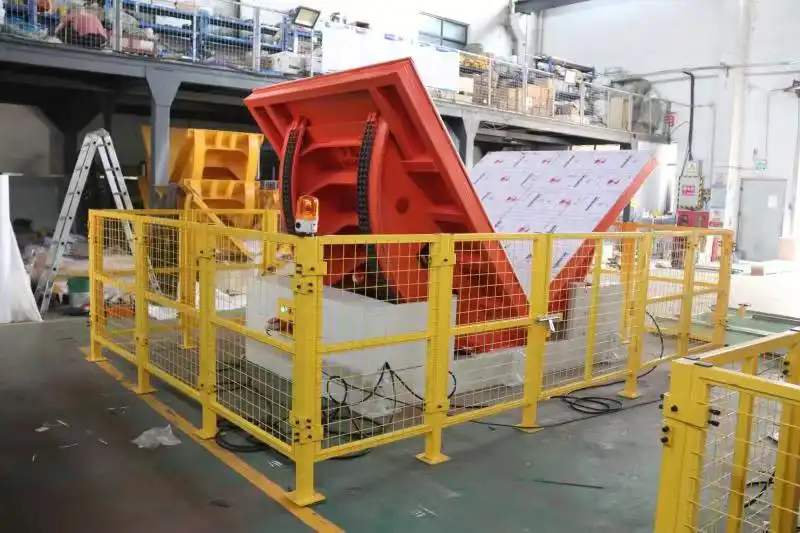
This hybrid approach might sound complex, but it's really about being smart and proactive. It's about solving problems before they ever happen on your factory floor. As an engineer who has helped clients like you integrate new equipment, I've seen firsthand how this strategy transforms a high-risk project into a controlled, efficient upgrade. Let’s break down each part of this approach so you can see exactly how it works and why it’s the gold standard for minimizing downtime.
How does pre-installation planning prevent delays?
You've made a significant investment in a new mold flipper. The machine arrives at your plant in Indonesia, ready for installation. But then the crew discovers the foundation isn't level, the power supply is incompatible, or the machine physically won't fit through the main access route. This is the kind of nightmare scenario that turns a two-day job into a two-week disaster, costing you money and creating massive frustration. The solution is simple in concept but requires discipline in execution: meticulous pre-installation planning that leaves nothing to chance.
Pre-installation planning prevents delays by creating a detailed, step-by-step roadmap. This includes 3D layout simulations, civil work verification, utility mapping, and a logistics plan that accounts for local Indonesian conditions, turning potential surprises into scheduled tasks.
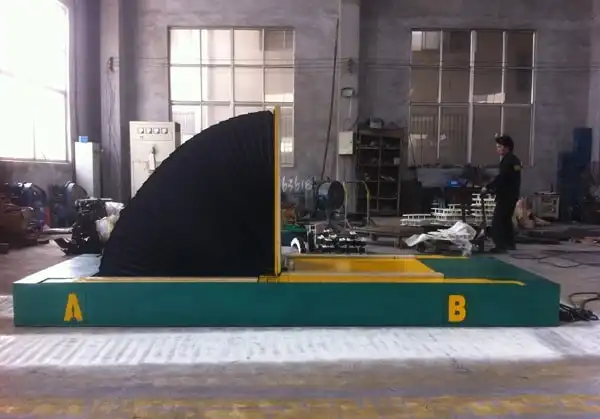
In my experience, the planning phase is where you achieve the biggest wins in saving time. It's not about working faster on-site; it's about making the on-site work incredibly simple and predictable. For a leader like Javier, who values stability and return on investment, this planning phase is the ultimate risk mitigation tool. It's how you ensure your capital expenditure starts generating returns as quickly as possible. Let's dive deeper into the key elements of this crucial stage.
The Digital Twin: Simulating Success
The first step we always take is to create a digital twin of the installation area. We don't just look at 2D blueprints. We use sophisticated 3D modeling software to build an exact replica of your factory floor. We then place a detailed 3D model of the new mold flipper into this virtual environment. This allows us to simulate the entire installation process from start to finish. We can track the path of the machine from the delivery truck, through the factory doors, to its final position. This process immediately flags potential problems like narrow passageways, low-hanging pipes, or insufficient clearance around columns. We can test different routes and lifting strategies virtually, long before the actual machine arrives. This digital rehearsal ensures that on installation day, the physical process is just a replay of a plan that we already know works perfectly.
Civil and Utility Readiness Checklist
A machine is only as good as the foundation and utilities that support it. In Indonesia, factors like power grid stability and local construction standards can vary. We work with your team to complete a comprehensive checklist. This isn't just a casual conversation; it's a formal verification process. We confirm that the concrete foundation is cured, level, and strong enough to handle the dynamic loads of the mold flipper. We check the electrical supply, ensuring the voltage, phase, and frequency match the machine's specifications perfectly. We map out the routes for hydraulic lines and data cables for a clean and safe setup. This detailed checklist ensures that when our installation team arrives, they can immediately start connecting the machine, not waiting for electricians or builders to fix unforeseen issues.
| Item Check | Key Specification (Example) | Verification Method | Responsibility |
|---|---|---|---|
| Concrete Foundation | Min. 25 MPa strength, level ±2mm | Schmidt hammer, laser level reading | Client's Team |
| Electrical Supply | 380V, 50Hz, 3-Phase + G | Multimeter measurement at source | Client & SHJLPACK |
| Hydraulic Lines | Designated clean, accessible path | Physical walk-through, 3D model check | Client & SHJLPACK |
| Network Port (IoT) | Active Ethernet port | Laptop ping test | Client's IT Dept. |
| Crane Access | Min. 5 meters overhead clearance | Laser measurement, 3D simulation | Client & SHJLPACK |
Logistics and Local Knowledge
Getting heavy machinery into Indonesia and transported to a specific factory site has its own unique challenges. You have to navigate ports, customs clearance, and road infrastructure that may not be designed for oversized loads. This is where a strategic partner proves their worth. We don't just ship the machine to the nearest port. We develop a door-to-door logistics plan. This involves working with experienced local freight forwarders who understand the Indonesian customs bureaucracy. They know which permits are needed, how to manage inspections, and the best routes for inland transport to avoid delays. By managing this entire process, we take the logistical burden off your shoulders and ensure the mold flipper arrives at your site on the scheduled day, ready for a smooth installation.
What role does modular design play in fast installation?
Imagine trying to build a complex car engine from hundreds of individual parts right on your factory floor. It would be slow, messy, and prone to errors. Now imagine receiving the engine as a fully assembled and tested block that you just need to mount and connect. This is the difference between traditional on-site assembly and a modern modular design approach for industrial machinery. For a busy steel mill, where every square meter of floor space and every hour of labor is valuable, the old way of doing things is a major source of disruption and delay.
Modular design accelerates installation because the mold flipper arrives in large, pre-assembled, and pre-tested sections. This approach minimizes on-site welding, wiring, and complex assembly, essentially turning the installation into a "plug-and-play" process.
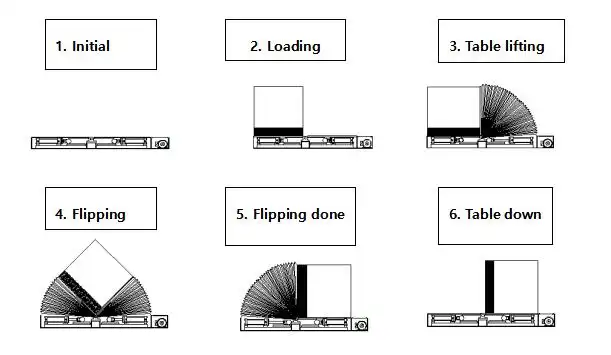
I remember transitioning my own factory's philosophy to embrace modularity. The change was revolutionary. It shifted the most complex work from the client's high-pressure environment to our controlled factory setting. This not only speeds up the final installation but also dramatically improves the quality and reliability of the equipment. For a CEO like Javier, who is focused on production stability, this reduction in on-site variables is a massive benefit. Let's look closer at how this works in practice.
From Factory to Floor: The Modular Advantage
Our design and manufacturing process is built around modularity. We break the mold flipper down into logical, self-contained units. For example, the main tilting platform with its drive mechanism is one module. The hydraulic power unit, with its pump, motor, reservoir, and valve block, is another complete module. The main electrical cabinet, with the PLC, drives, and safety relays, is a third module. Each of these modules is fully assembled, wired, piped, and most importantly, functionally tested in our factory before it is shipped. We run the motors, actuate the hydraulics, and test the software logic. This means that when the modules arrive at your plant in Indonesia, the installation is no longer about fabrication. It's about assembly. It’s about positioning the main modules, bolting them together, and connecting a few pre-labeled electrical and hydraulic lines.
Comparing Traditional vs. Modular Installation
The time savings from a modular approach are not just theoretical; they are significant and measurable. A traditional installation requires extensive on-site work by highly skilled, and often expensive, tradespeople. A modular installation simplifies these tasks dramatically.
| Task | Traditional On-Site Approach | Modular Approach (SHJLPACK) | Time Savings |
|---|---|---|---|
| Structural Assembly | Welding and fitting of multiple small parts | Bolting together 2-3 large, pre-fit modules | 70-80% |
| Electrical Wiring | Running hundreds of individual wires on-site | Connecting multi-pin plugs between modules | 80-90% |
| Hydraulic Piping | Cutting, bending, and fitting pipes on-site | Connecting pre-made hoses with quick-couplers | 75-85% |
| Initial Commissioning | Extensive on-site debugging and testing | Final checks and parameter tuning only | 60-70% |
As you can see, the modular approach transforms the most time-consuming and error-prone activities into simple, fast connection tasks. This directly translates into less downtime for your production line.
Benefits Beyond Speed
The advantages of modular design go far beyond just a faster installation. Quality control is significantly higher because the most critical assembly and testing happens in our specialized factory environment, free from the dust and distractions of a busy steel mill. Safety is also greatly improved. By eliminating most of the on-site welding, grinding, and complex wiring, we reduce the need for "hot work" permits and minimize the risk of accidents on your floor. Finally, it causes less disruption to your surrounding operations. Since the installation is cleaner, quieter, and quicker, the rest of your production line can continue to run with minimal interference. For a plant striving for 95% uptime, these "soft" benefits are just as important as the hard time savings.
Why is a specialized installation team so critical in Indonesia?
You can have the best-planned project and the most advanced modular machine, but if the team putting it together on-site lacks the right skills, you're heading for trouble. I've seen situations where a local crew, though skilled in general mechanics, accidentally damages sensitive electronics or misaligns a critical component on a machine they've never seen before. These small mistakes create huge delays and can even compromise the long-term performance and safety of the equipment. This is why having a specialized installation team is not a luxury; it is an absolute necessity, especially when operating in a specific environment like Indonesia.
A specialized installation team is critical in Indonesia because they combine expert product knowledge with an understanding of local labor practices, safety regulations, and logistical challenges. This ensures the mold flipper is installed correctly, safely, and efficiently, avoiding costly errors and cultural misunderstandings.
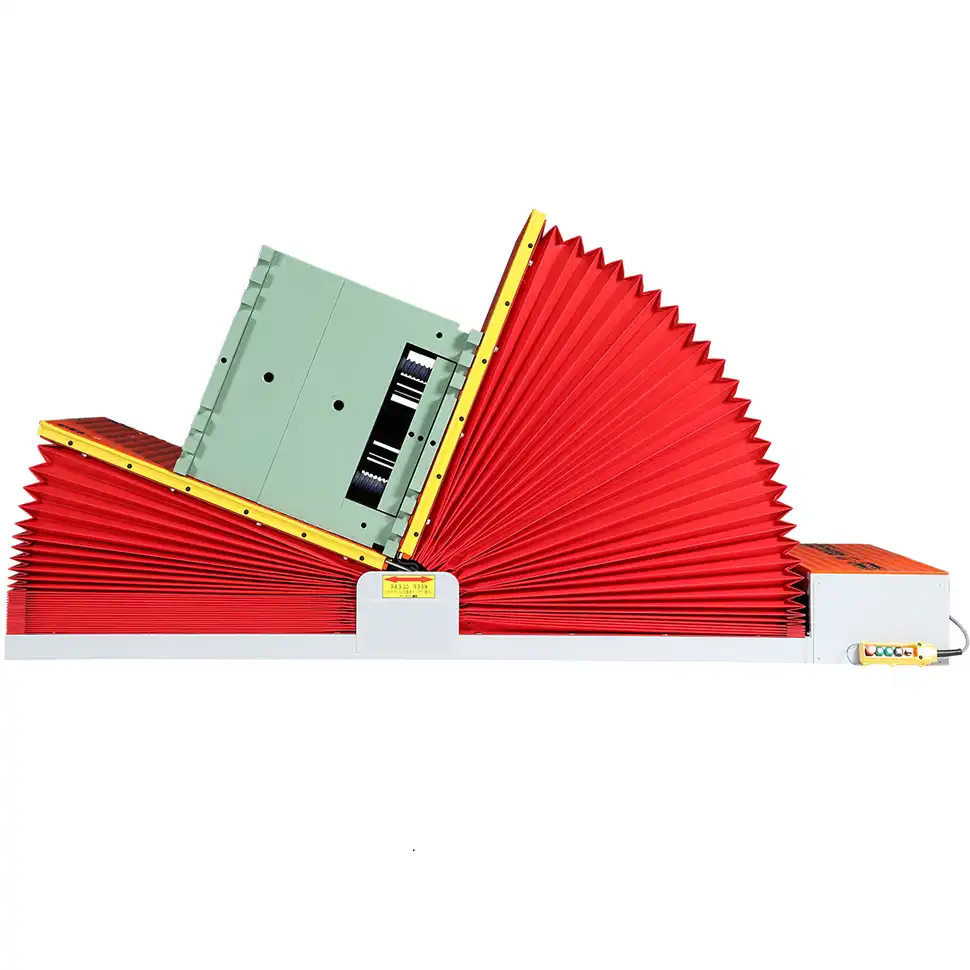
The right team is a bridge. They bridge the gap between the machine's design intent and the reality of your factory floor. They bridge the gap between international engineering standards and local Indonesian regulations. And most importantly, they bridge the gap between our company and yours, transforming a simple supplier-client transaction into a true partnership. This is the kind of support a forward-thinking leader like Javier expects, and it's what we are dedicated to providing.
The A-Team: Blending Global and Local Expertise
Our approach is to build a "dream team" for each installation. This team is a deliberate blend of global expertise and local know-how. It typically consists of:
- Our Lead Engineer: This is an expert from SHJLPACK who knows the mold flipper inside and out. They have supervised dozens of these installations. They are the ultimate authority on the machine's mechanical, electrical, and software systems.
- A Local Project Manager: This is a crucial role. We work with a bilingual Indonesian professional who manages all on-site logistics. They are responsible for securing necessary work permits, coordinating with local labor, and navigating any site-specific rules or union requirements. They are the communication hub.
- Skilled Local Technicians: We hire and supervise a team of qualified local mechanical fitters and electricians. They provide the hands-on labor, but they work under the direct guidance of our lead engineer. This model is efficient, cost-effective, and helps build local skills.
This blended team structure ensures that we have the technical depth to install the machine perfectly, while also having the cultural and regulatory fluency to operate effectively in the Indonesian context.
Bridging the Skill and Culture Gap
A successful installation involves more than just assembling hardware; it's about transferring knowledge. Our lead engineer's role is not just to supervise, but to teach. During the installation and commissioning process, we insist that your maintenance and operations team works alongside our team. They don't just watch; they participate. They help align components, pull cables, and take part in the initial test runs. This hands-on involvement is the most effective form of training. It demystifies the new equipment and builds a sense of ownership in your team. We also overcome language barriers by having our local project manager facilitate clear communication, ensuring instructions are understood and feedback is heard.
Navigating Indonesian Safety and Labor Laws
Every country has its own specific workplace health and safety regulations. In Indonesia, the K3 (Keselamatan dan Kesehatan Kerja) standards are paramount. A non-compliant work site can be shut down by authorities, leading to major delays. Our specialized team is well-versed in these requirements. Before any work begins, we conduct a thorough risk assessment and prepare all the necessary safety documentation. We hold daily "toolbox talks" to review the day's tasks and safety protocols with the entire crew. By proactively managing compliance, we ensure the project proceeds without any regulatory interruptions. This demonstrates a level of professionalism and foresight that builds trust and ensures a stable, predictable project timeline.
My Insights!
Over the years, after starting as an engineer and eventually building my own factory, I've learned that the technical manuals and project plans only tell half the story. You can have the best machine and the most detailed schematics, but what truly separates a smooth installation from a stressful one are the human elements. These are the insights I've gained from being on the factory floor, solving real-world problems with clients who, like Javier, depend on their equipment to work flawlessly from day one. Any supplier can sell you a machine. A true partner helps you succeed with it.
My core insight is that minimizing downtime is not just a technical process; it's a human one. The most successful installations happen when we establish a true partnership with the client's team, foster open communication from day one, and empower the on-site operators with ownership and knowledge.
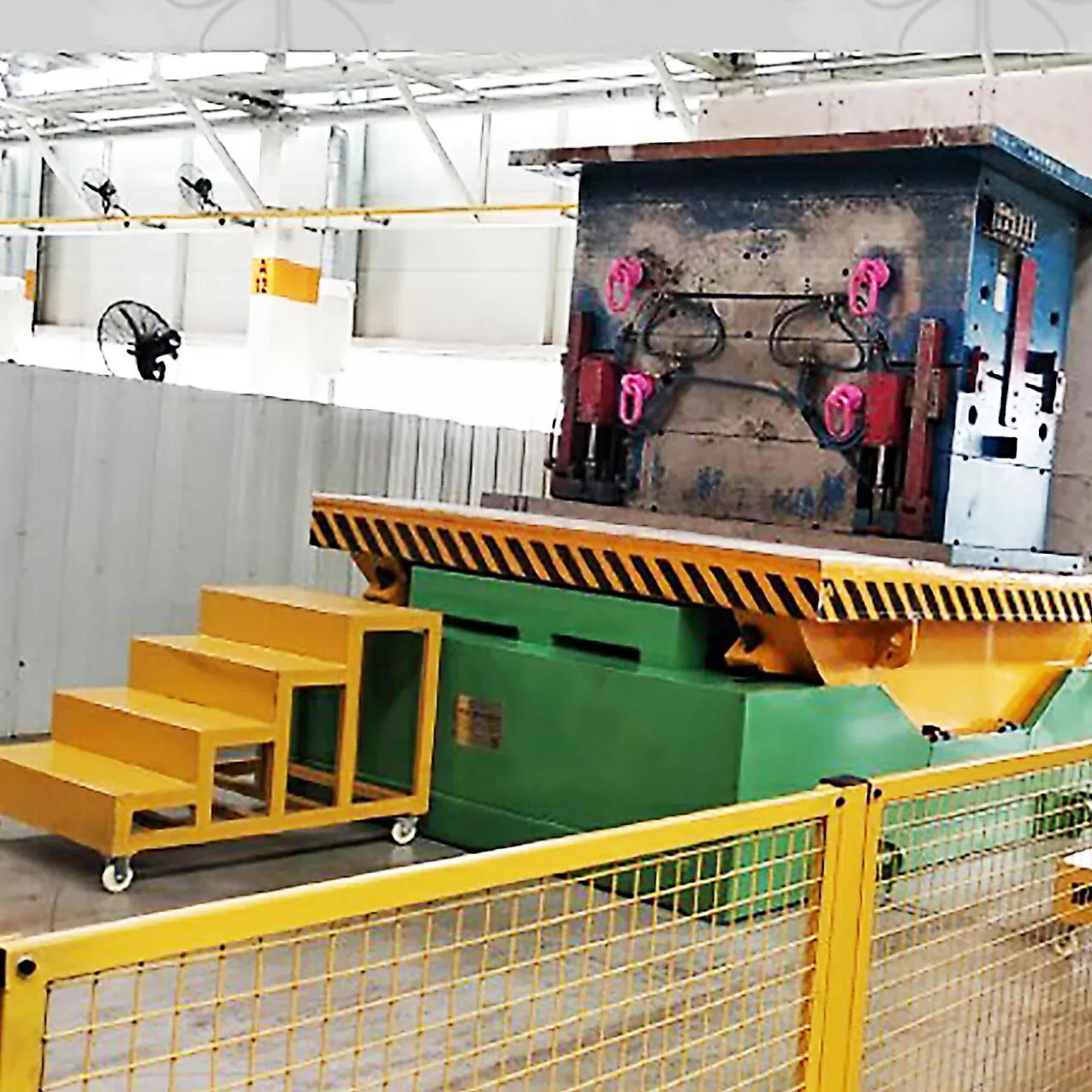
These are not things you'll find in a standard proposal. They are philosophies born from experience. I built SHJLPACK on the principle of sharing knowledge, and these insights are the most valuable things I can share with you. Let’s look at a few practical actions that embody this philosophy.
The "Day Zero" Kick-off Meeting
Before a single bolt is turned, I insist on what I call the "Day Zero" meeting. We get everyone in one room: our lead engineer, our local project manager, and the client's key people—the plant manager, the head of maintenance, the lead operator for that line, and the safety officer. We put the entire installation plan on a big screen and walk through it, step-by-step. We define who is responsible for what. We establish a clear communication chain and agree on a single point of contact on both sides to avoid confusion. I remember a project in Surabaya where this single meeting saved us. We discovered that a planned plant-wide maintenance shutdown was scheduled for the middle of our installation week. Because we were all in the room together, we were able to adjust our schedule instantly, avoiding a three-day delay. This simple, one-hour meeting prevents countless hours of confusion and delay later on.
Don't Just Install, Empower
My goal is not just to install a machine; it's to make your team the experts on it. A machine that is understood is a machine that is well-maintained. During the installation, our engineer actively coaches your maintenance crew. When it's time to do the mechanical alignment, your technician has the wrench in their hand, and our engineer guides them. When it's time to check the I/O in the PLC, your electrician is there, learning the software interface. This collaborative approach achieves two things. First, it provides the best possible hands-on training. Second, it builds a powerful sense of ownership. It's no longer "the new machine from SHJLPACK." It becomes "our mold flipper." That pride in ownership ensures the machine will be cared for properly long after we are gone, directly contributing to your goal of 95% uptime.
The Post-Installation "Hypercare" Period
Our responsibility doesn't end when the machine passes its final commissioning test. For a critical piece of equipment like a mold flipper, we implement a "hypercare" period, typically for the first one to two weeks of live production. Our lead engineer remains on-site or on-call nearby. They observe the machine during actual mold changes with your crew. They help fine-tune cycle times, answer operator questions as they arise, and troubleshoot any minor issues in real-time. This period is invaluable for building your team's confidence. It smooths out the learning curve and ensures the machine is integrated seamlessly into your workflow. This investment of our time is a clear signal to clients like you that we are committed to your long-term success. It's the final step in building a strategic partnership.
Conclusion
A fast mold flipper installation in Indonesia relies on planning, modularity, and a specialized team. It's about a partnership built on communication and shared knowledge to ensure immediate operational success.




